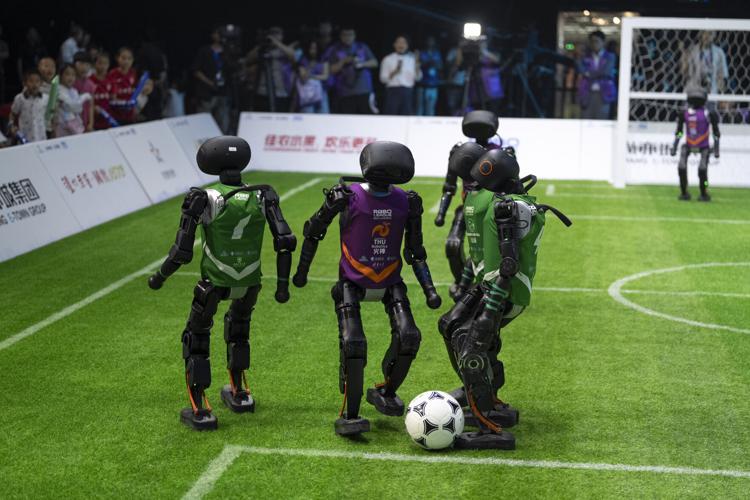Humanoid robots are generating more excitement on the soccer pitch than China’s national men’s team. On Saturday night in Beijing, fans gathered not to watch professional athletes, but four teams of AI-powered humanoid robots competing in fully autonomous 3-on-3 soccer matches marking a milestone event in the run-up to the World Humanoid Robot Games.
Each robot operated without human control, relying entirely on artificial intelligence to make decisions on the field. Using advanced visual sensors, the robots could identify the ball, track player positions, and navigate the pitch with notable agility. According to event organizers, this was the first time in China that such an autonomous soccer showdown had taken place capturing the public’s imagination far beyond the boundaries of traditional sport.
While China’s men’s team has struggled to impress fans in recent years, the robotic match was met with applause and curiosity, fueled more by technological wonder than athletic spectacle. Although these AI footballers aren’t yet Champions League-ready, they showed flashes of strategic movement, quick passes, and the ability to stand up unassisted after falling. Still, some had to be carried off the field by staff using stretchers, offering an almost humorous nod to real-life sports injuries.
The event was part of China’s broader strategy to advance in humanoid robotics and artificial intelligence. By using sports soccer, marathons, and even boxing—as testbeds, China aims to refine real-time decision-making capabilities in robots and explore practical applications of AI in dynamic environments.
This competition not only highlighted China’s technological prowess but also sparked debate about the future of sports and entertainment. Could robots someday become regular fixtures in athletic competitions? While that remains to be seen, one thing is clear: when it comes to capturing the imagination of a tech-savvy generation, China’s robots are already scoring big.

